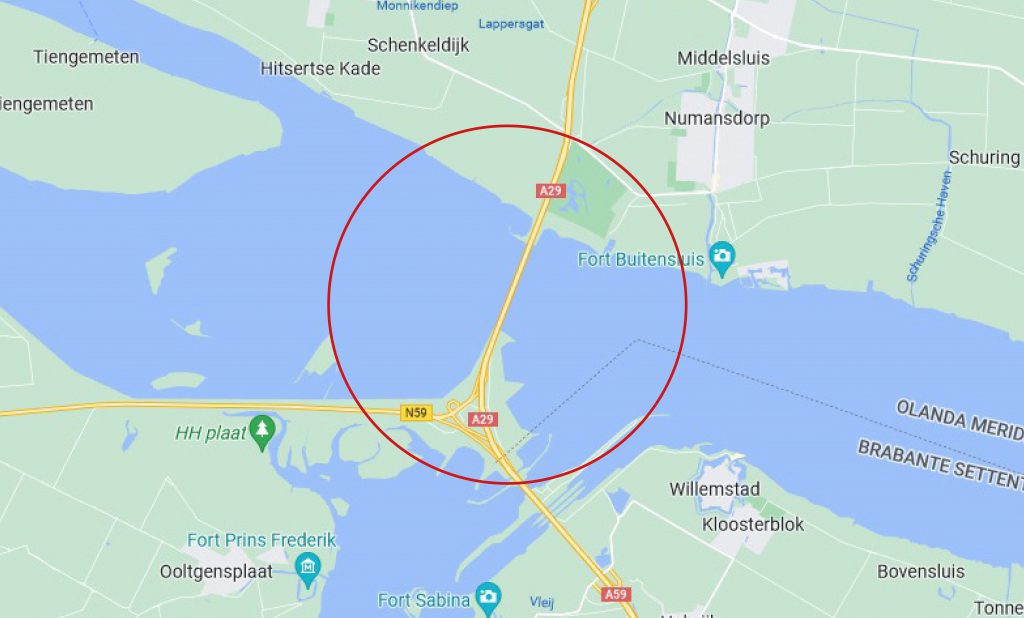Location: Numansdorp, the Netherland
Customer: Witteveen & Bos for Department of Public works (RWS)
Duration of monitoring service: 9 months
Project start date: November 2019

For the structural monitoring of the bridge subject to recalculation, consistently with the positions and quantities reported in the documents provided by the customer, it is foreseen the use of 49 strain sensors (bare fibre) and 49 temperature sensors (steel tube). These sensors have been glued. In addition, four video cameras, one for each lane, were installed to identify vehicle type and license plates.
The temperature sensors were stick by tape or glue on the surface close to the strain sensors. The fibre used for strain and temperature is the same and to obtain the right measurement of temperature that sensor will be touching the same surface where the strain sensor is installed and temperature sensor will be close to the strain sensor. Using the gluing procedure of the temperature sensor, that one will be glued only at the edge of the sensor to guarantee a perfect contact between the sensor and the surface.
We have already used a configuration in which the temperature sensor is not incorporated in the deformation sensor, obtaining the same results as using the built-in temperature sensor. Furthermore, we compared the reading of a bare fibre temperature sensor with a steel tube temperature sensor and the results show a difference in order of the accuracy of each sensor.
The sensors provided will be accompanied by suitable transducers to be installed on the different surfaces of the bridge. The strain sensor makes use of the sensitivity of fiber grating to measure the strain.
Strain sensors bare fibre
The strain sensor makes use of the sensitivity of fiber grating to measure the strain.
The sensors will be connected in series on a same optical fiber (generally in a variable number between 20 and 40: depending on the type of material on which they are installed). The optical strain sensors do not require electrical power and much less maintenance, after the first calibration after installation, will work in a continuous manner as long as it will not be disconnected. The chain of optical fiber to which are connected the strain sensors, and to which may also be connected to other optical sensors, is in turn connected to a machine of optical acquisition that will be in the central control. The interrogator is controlled by a computer that analyzes the data in real time and send alarms to the operator control.
Temperature sensors
FBG Temperature sensor is packaged by stainless steel. It can measure the temperature making use of the inherent feature of heat-sensitivity of FBG. It is suitable for long time temperature monitor in the applications for power station, railway and oil gas.
To showing the potential of its own monitoring system we propose to add some sensors to the Witteveen + Bos configuration.
In Section X1 and X2, we propose to add strain sensors on symmetric position respect to the neutral axis of the structure, to carry out differential measurements to discriminate the deformation due to the temperature from the deformation caused by the vehicle transiting on the bridge, and to obtain the deformation along three axes. Details of Section X in Fig.1. We propose to install a Section B, Bulb 14 and 15 (Fig.3) and a temperature sensor, with fibre optic sensors in parallel to analogue strain gauges, to compare themeasurements, results and repeatability of the measurements.